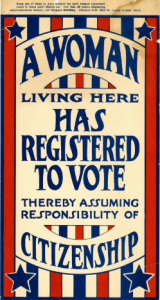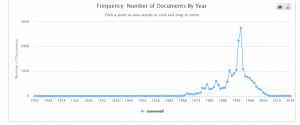| By Mary Kelly |
When I use the term databases while helping students and non-specialists at the reference desk, there is always a moment when a patron unfamiliar with the availability and scope of modern primary source databases, looks a bit wary at my enthusiasm for these electronic collections. Of course, serious researchers understand the value of digital primary resources, but often young people are not as interested since it sounds more complicated to delve into an electronic resource than to read an article or look at a book. Digital primary sources have made thousands of historic documents available to all of us—not just to serious researchers. And these databases have the additional benefit of presenting this material to students in such a way that can open the user to moments that are both visually appealing and thought-provoking when learning about history and societal transformations.
Curated collections within the Gale family of databases provide a variety of primary sources appropriate for every research need. Academic researchers, high school students, and “civilians” all will benefit from the vast scope and many features that these materials offer. I spent many hours poking through Archives of Sexuality & Gender and Smithsonian Collections Online, and was able to browse a variety of materials appropriate for every research need.
Archives of Sexuality & Gender is one of the best ways to examine original documents, photos, and periodicals related to issues in LGBTQ rights/activism. Newsletters, brochures, photographs, and other material produced by individuals and dedicated LGBTQ organizations are presented in this archive. Major issues and topics, such as Stonewall and the AIDS crisis, have thousands of items of primary sourced material in digital form.

This database includes holdings from the Lesbian Herstory Archives and Gay, Lesbian, Bisexual, Transgender Historical Society archives, in addition to other collections and organizations dedicated to gender and sexuality issues. Although mostly in English, the database does include materials from across the globe.
Searching and browsing with term clusters/frequency provided me with the ability to narrow my focus to specific topics and items. Cross referencing to find additional materials and limiting search to type or date was easy through sidebar menus. Even the most novice researcher can navigate this database easily.

I also started playing with the Women in Aviation portion of Smithsonian Collections Online. Personal documents, flight logs, scrapbooks, and other material allow for a museum-like experience highlighting women aviators and their often underplayed role in aviation history.
Smithsonian Sources in U.S. History is another Smithsonian database that is like a virtual museum tour. Students and others can discover sources from artifacts to documents for the eras from the Colonial period to the Cold War. Using “Suffrage” as a keyword, I browsed everything from speeches to Votes for Women campaign paraphernalia.
The amount of material available through many of these archives is staggering. Regardless of the type of researcher or student, these databases provide some wonderful primary source material. Educators and librarians who want to entice students and hammer home concepts through research with primary source materials will benefit from these specialty databases.
My inner history nerd was in heaven.

Mary is an Adult Services Librarian at the Plymouth District Library in Plymouth, MI. She, too, is obsessed with collection quality, and has taken it up a notch with never ending shelf lists, spreadsheets, and inventory. Mary has a special knack for linking books to readers of all ages.
Together Mary and Holly are the authors of “Making a Collection Count: a holistic approach to library collection management. They also tweet at @awfullibbooks and blog at awfullibrarybooks.net.


